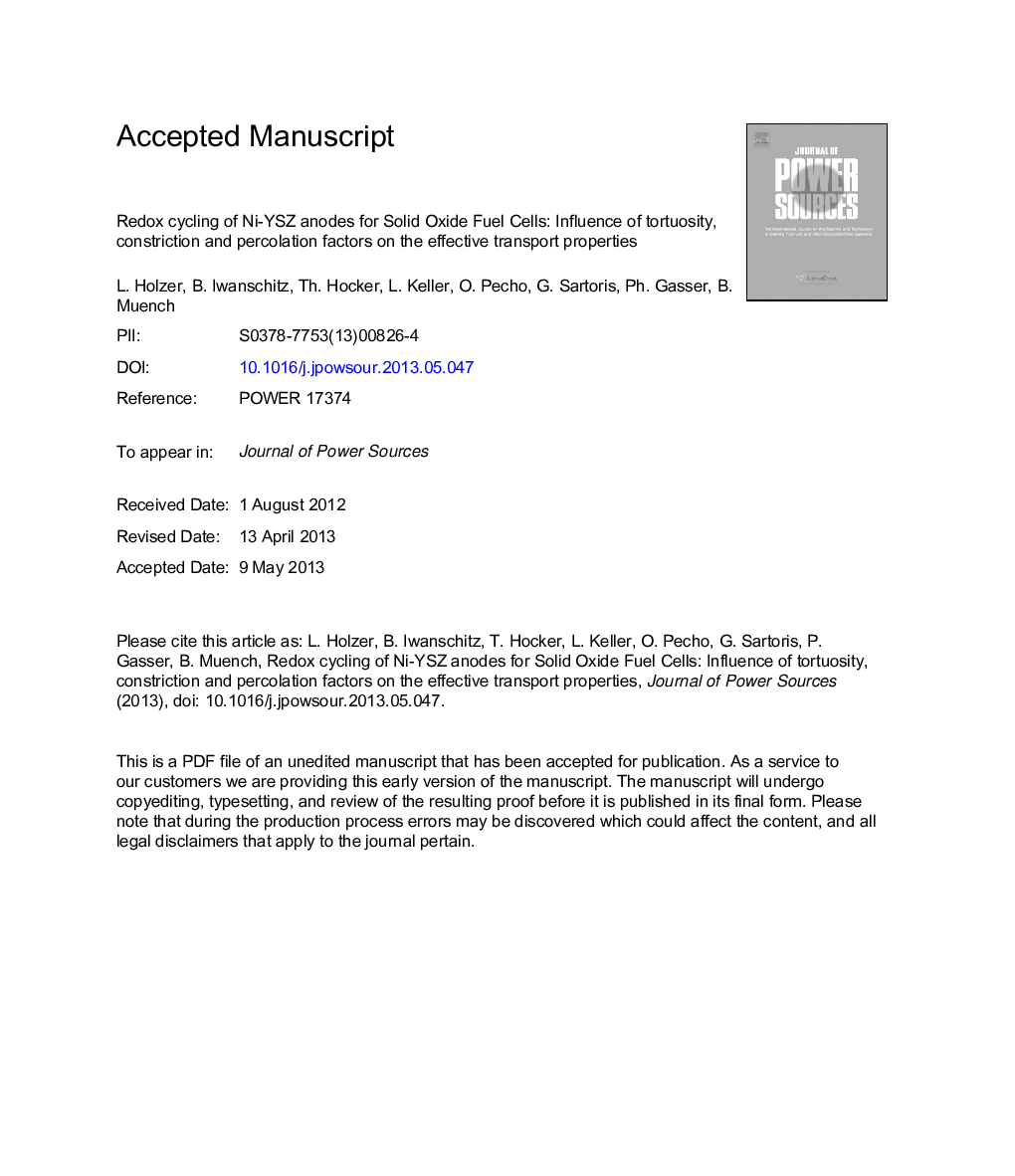| Article ID | Journal | Published Year | Pages | File Type |
|---|---|---|---|---|
| 7739454 | Journal of Power Sources | 2013 | 68 Pages |
Abstract
A methodology based on FIB-tomography and image analysis (IA) is proposed which allows quantification of all relevant morphological features that are necessary to predict effective transport properties in porous SOFC electrodes. These morphological features are constrictivity, tortuosity, percolation factor and phase volume fraction. An M-factor can then be calculated which represents the ratio of effective over intrinsic conductivities. The methodology is used to describe effects of microstructure degradation in Ni-YSZ anodes which are caused by redox cycling at 950 °C. The so calculated M-factors predict that because of redox cycling the effective electronic conductivity of nickel decreases from 3 to 1.2% which is mainly due to changes of percolation and constriction factors. Based on these results the effective electrical conductivity of nickel is predicted to be 685 S/cm before redox and 243 S/cm after 8 redox cycles. The predictions fit well with the experimental measurements that reveal 600 S/cm before and 200 S/cm after redox cycling at 950 °C. For YSZ the M-factors obtained with 3D-analysis predict that the degradation causes a drop of the effective ionic conductivity from 7 to 0.6%, which is due to a change of the bottleneck dimensions. This finding contradicts the frequent interpretation of YSZ as a 'rigid backbone' that is not affected by microstructure degradation. Finally, the effective bulk gas diffusivity increases from 2 to 11% due to an increase of porosity associated with swelling of the anode.
Related Topics
Physical Sciences and Engineering
Chemistry
Electrochemistry
Authors
L. Holzer, B. Iwanschitz, Th. Hocker, L. Keller, O. Pecho, G. Sartoris, Ph. Gasser, B. Muench,
